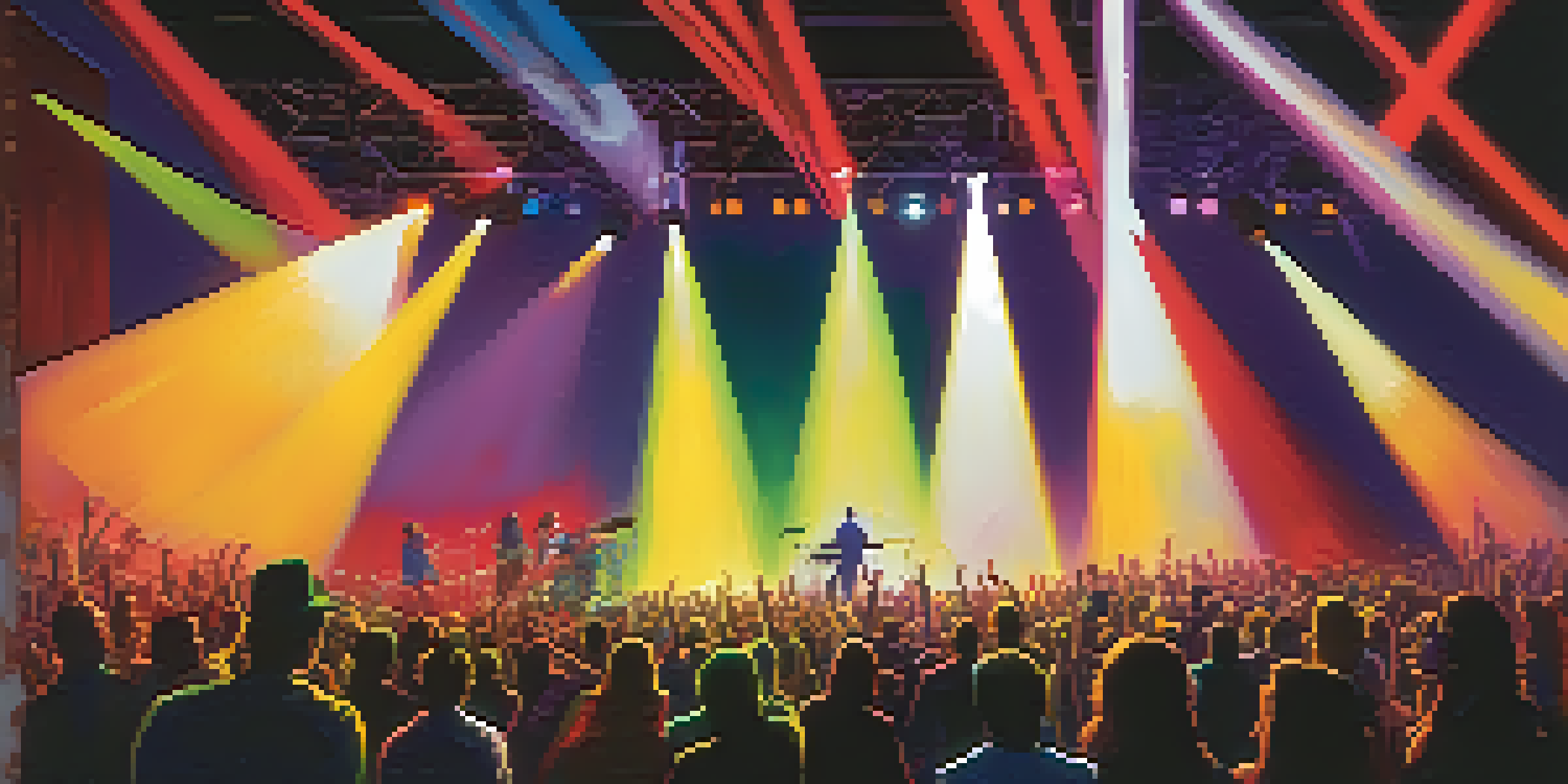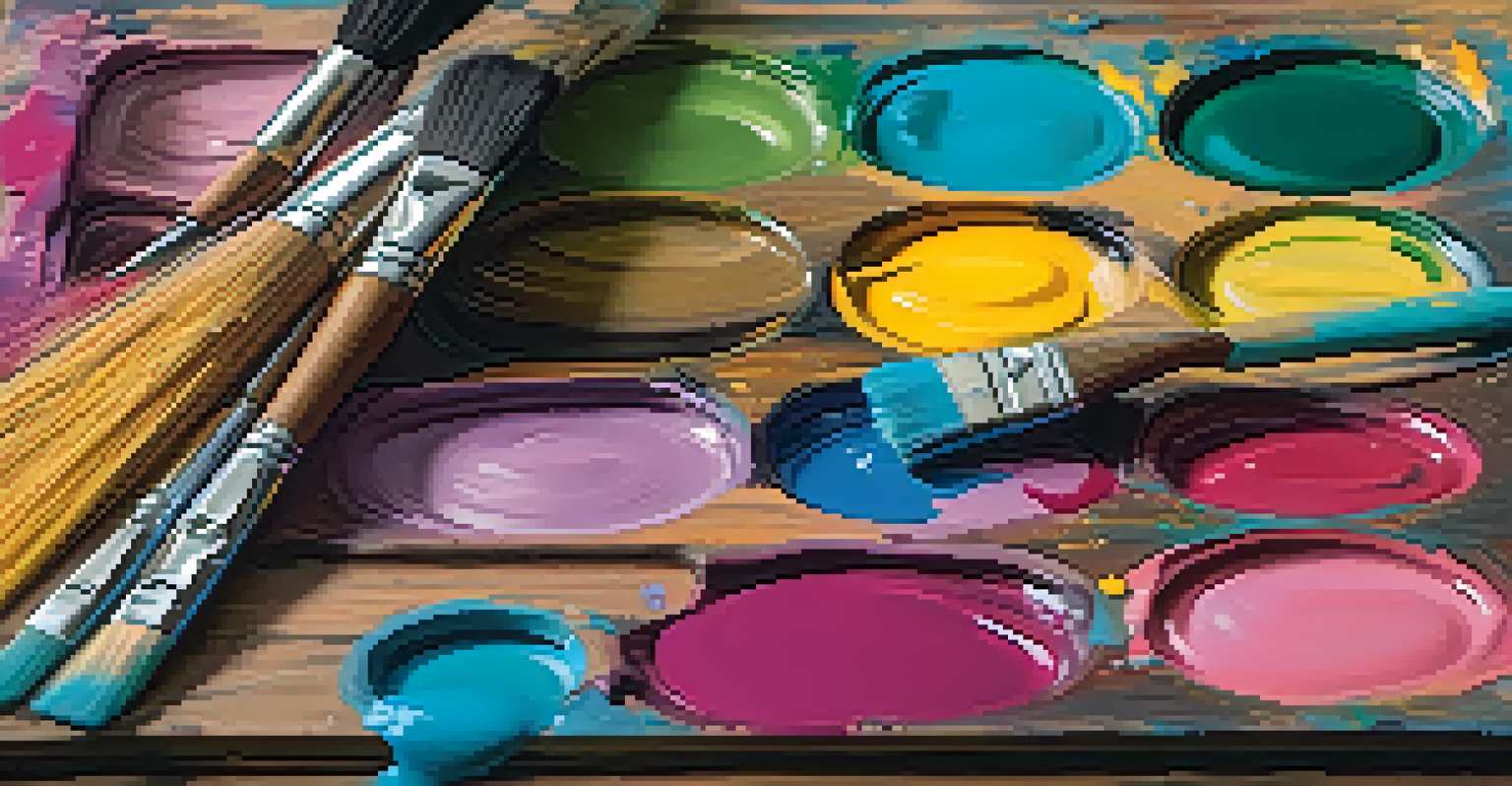Additive vs. Subtractive Color Mixing: Key Differences Explained

What is Additive Color Mixing?
Additive color mixing is the process of combining light colors to create new hues. This occurs when various colored lights are mixed together, such as red, green, and blue. The more colors you add, the brighter and lighter the resulting color becomes, ultimately leading to white when all colors are combined.
Color is the keyboard, the eyes are the harmonies, the soul is the piano with many strings.
Think of it like mixing different colored spotlights at a concert. When they overlap, they create vibrant new colors on the stage. For instance, if you shine red and green lights together, you'll see yellow emerge in the overlap. This principle is widely used in digital screens, televisions, and stage lighting.
The RGB color model (red, green, blue) is the most common representation of additive mixing. It’s essential for understanding how electronic displays work, as they rely on this method to bring images to life. So, whenever you see colors on your screen, remember that it’s all about adding light.
What is Subtractive Color Mixing?
Subtractive color mixing, on the other hand, involves combining pigments or dyes. In this case, colors are created by subtracting light from white, which means darker colors absorb more light. The primary colors in subtractive mixing are cyan, magenta, and yellow, which can be combined to create a wide range of colors.

Picture mixing paints on a palette: when you blend blue and yellow, you create green. This is a classic example of subtractive mixing, where each pigment absorbs certain wavelengths of light while reflecting others. The more colors you blend, the closer you get to a darker, muddier color, often resulting in brown.
Additive Mixing Uses Light Colors
Additive color mixing combines colored lights, like red, green, and blue, to create new hues and is essential for digital displays.
The CMY and CMYK models (with K representing black) are commonly used in printing. They rely on subtractive mixing principles to produce the full spectrum of colors on paper. Understanding this process is crucial for artists and designers alike, as it affects how colors appear in printed materials.
Key Differences Between Additive and Subtractive Mixing
The most significant difference between additive and subtractive mixing lies in the medium used: light versus pigments. Additive mixing starts with darkness and adds light, while subtractive mixing starts with light and removes it. This fundamental distinction affects how colors are perceived and combined.
Colors are the smiles of nature.
In additive mixing, combining all primary colors results in white, while in subtractive mixing, combining all primary colors yields black. This can be a bit counterintuitive, but it highlights the unique nature of each mixing method. When you think about it, it's like adding ingredients versus taking them away.
These differences have practical implications in various fields, from digital design to traditional art. Understanding how each method works can help creators choose the right approach for their projects, ensuring that their color choices achieve the desired effect.
Applications of Additive Color Mixing
Additive color mixing is primarily used in technologies that rely on light, such as computer screens, televisions, and projectors. These devices utilize the RGB color model to display a vast array of colors by adjusting the intensity of red, green, and blue light. This is why digital images can appear so vibrant and dynamic.
In the realm of entertainment, additive mixing plays a crucial role in stage lighting and visual effects. Lighting designers skillfully blend colored lights to create moods and atmospheres, enhancing the overall experience for audiences. Just think of how a concert can shift from a warm glow to a cool, dramatic lighting scheme.
Subtractive Mixing Involves Pigments
Subtractive color mixing uses pigments to create colors by absorbing light, commonly applied in painting and printing.
Additionally, additive color mixing is vital in photography and video production. Understanding how to manipulate light can help photographers capture stunning images, making them feel more alive and engaging. It’s an essential skill for anyone looking to excel in visual media.
Applications of Subtractive Color Mixing
Subtractive color mixing is primarily utilized in traditional art forms, such as painting, printing, and dyeing. Artists mix pigments to create their desired colors, using the CMY or CMYK color models to achieve the right shades. This hands-on approach allows for a tactile experience that many creators cherish.
In the printing industry, subtractive mixing is crucial for producing high-quality images. Printers rely on the absorption of light to create distinct colors on paper, ensuring that the final product meets designers' specifications. It's fascinating to see how ink can transform a blank page into a vibrant work of art.
Moreover, subtractive mixing is integral in textile manufacturing and other industries where color application is critical. Understanding how colors interact when layered can help professionals achieve the desired outcomes, whether they're designing clothing or creating branded materials.
Common Misconceptions About Color Mixing
One common misconception is that all color mixing works the same way. While it might seem intuitive, additive and subtractive mixing operate on fundamentally different principles. This confusion often leads to mistakes in design and art, where creators might expect one mixing method to behave like the other.
Another myth is that mixing any colors will always yield a new color. In subtractive mixing, for example, combining too many pigments can lead to dull, muddy shades. It’s essential to understand the limitations and characteristics of each method to avoid disappointment in your creative endeavors.
Key Differences in Mixing Methods
The fundamental difference between additive and subtractive mixing lies in their approach to light, affecting how colors are perceived.
Lastly, some people believe that understanding color mixing is only for artists or designers. In reality, anyone working with colors—whether in marketing, photography, or digital media—can benefit from grasping these concepts. It empowers individuals to make informed choices about color, enhancing their projects in various fields.
Conclusion: Embracing Color Mixing Techniques
Understanding the differences between additive and subtractive color mixing is crucial for anyone working with colors. Each method has its unique applications, principles, and effects, making it essential to know when to use each technique. By embracing these concepts, creators can enhance their work and communicate more effectively.
Whether you're designing a website, painting a masterpiece, or preparing printed materials, understanding how colors interact can elevate your projects. It allows for greater creativity and precision in achieving your vision. So, take the time to experiment with both additive and subtractive mixing, and watch your color skills flourish.

In the end, color is a powerful tool that can evoke emotions, convey messages, and create memorable experiences. By mastering the art of color mixing, you’ll be better equipped to harness its potential, making your creative endeavors even more impactful.